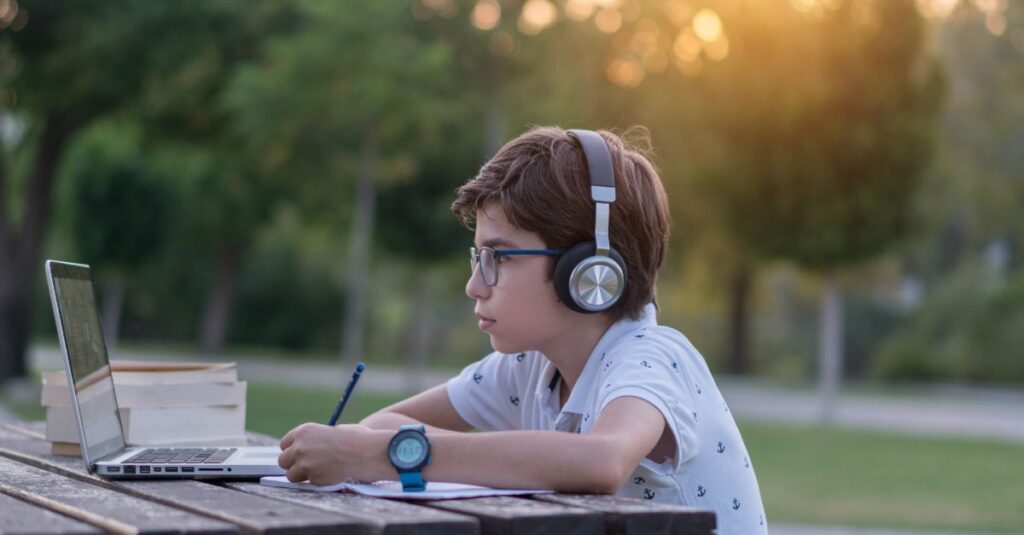Welcome to “A Guide to Australian Curriculum,” your go-to resource for understanding the details and advantages of the educational framework in Australia. In Part 1, we delved into the origins, structure, and key dimensions of the Australian Curriculum. Now, in Part 2, we will explore specific components such as learning areas, general capabilities, and cross-curriculum priorities. Join us as we unravel the details that make the Australian Curriculum a dynamic and holistic approach to education.
What is the Australian Curriculum?
- Australian Curriculum started in the 1940s, copying the British Curriculum.
- After World War II, knowledge was super important.
- All countries in the British Empire wanted the curriculum to be similar.
- Australian Curriculum is a strict and complete plan for students from Foundation to Year 10.
- After that, students finish with the New South Wales Higher School Certificate (HSC).
- HSC is recognized worldwide, allowing students to study in many countries.
- Opportunities for Students:
- Students can explore what they like and get really good at it.
- They learn a lot and get a fancy certificate that helps them study in different countries.
Subjects Covered
- Kindergarten to Year 5: Learn about numbers, shapes, and measurements, developing thinking, understanding, competence, and confidence.
- Year 6 to Year 8: Emphasis on building a caring community, and fully developing individual potential in a supportive and challenging environment. Curriculum focuses on standards, skills, creativity, and flexibility to promote self-reliance and responsible citizenship in a global society.
- Years 9 to 12: More freedom to choose subjects. In Years 11 and 12, students study a range of subjects, including mandatory English. Options include science, math, business, performing and visual arts, physical education, technology, and modern languages.
Structure & Format
- Students start formal education at age five in kindergarten.
- A 13-year schooling journey leads to the Higher School Certificate (HSC) at the end of Year 12 (age 18).
- HSC qualification allows entry into institutions worldwide.
- Curriculum divided into eight Key Learning Areas (KLAs):
- English, Mathematics, Science, Health, Physical Education, Humanities, Social Sciences, The Arts, Technologies, and Languages.
- Some subjects embed the last four KLAs, reflecting discipline customs and practices.
Three Dimensions of Australian Curriculum:
- Learning Areas:
- Divided into subjects like humanities, social sciences, history, geography, civics, citizenship, economics, business, arts (dance, drama, media arts, music, visual arts), and technologies (design, digital technologies).
- Offers a choice of fifteen languages to enhance proficiency.
- General Capabilities:
- Seven essential skills for the 21st century.
- Includes literacy, critical and creative thinking, numeracy, personal and social capabilities, information and communication technology (ICT) capabilities, ethical understanding, and intercultural understanding.
- Cross-Curriculum Priorities:
- Three critical priorities for Australia’s future.
- Includes Aboriginal and Torres Strait Islander’s Histories and Culture, Australia’s Engagement with Asia, and Sustainability.
Grading System and Graduation Requirements:
- Continuous assessments happen throughout the school year.
- Exams are held in the middle and at the end of the year.
- Reports are given at the end of each term.
- Term 1 and 3 reports give a quick overview of how students are doing.
- Term 2 and 4 reports are detailed, showing progress, achievements, and areas to improve.
- Final Years Assessment:
- In the last years of school:
- 50% of the grade comes from a final exam marked in Australia.
- The other 50% comes from school assignments, exams, and projects.
- This mix allows students to be assessed in different ways, not just through exams.
- Opportunities to maximize grades, opening doors to international tertiary education.
- In the last years of school:
Goal of Australian Curriculum:
- Shapes each child into a capable and effective adult.
- Prepares them for further studies or work.
- Learning Experiences:
- Develops skills for higher learning in each subject.
- Builds life skills, behaviors, and attitudes.
- Seven General Capabilities:
- Intercultural understanding.
- Literacy and numeracy skills.
- ICT (technology) capability.
- Critical and creative thinking.
- Personal and social skills.
- Ethical understanding.
- Holistic Approach:
- Focuses on more than just academic skills.
- Nurtures well-rounded individuals.
- Practical Application:
- Equips students to navigate a complex and dynamic world.
- Provides tools for success in various aspects of life.
From the diverse learning areas encompassing humanities, sciences, and the arts to the general capabilities fostering crucial life skills, and the cross-curriculum priorities addressing critical aspects of Australia’s future – we’ve got it covered. Get ready to navigate the key dimensions of this educational journey, ensuring a comprehensive understanding of how the curriculum shapes the learning experiences for students across the country. Let’s embark on the next part of our guide to the Australian Curriculum. Top of Form






